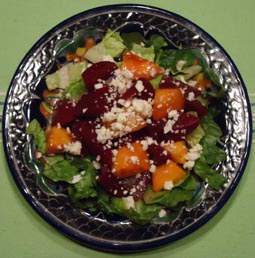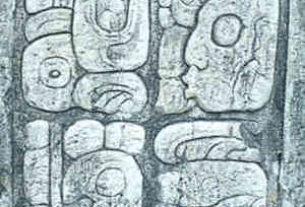Mexican Kitchen

Having family members spread out across the globe, we are fairly frequent travelers, with chances to try the cuisines of different countries and their regions. And inevitably, when presented with a new ingredient or use for a familiar one, I ask myself, “How is this used in Mexican cooking?” or even “Is this used in Mexican cooking?”
Such was the case a few months ago in Australia, where we noticed that nearly all hamburgers are served with sliced beets. No, not as a side dish, but on the burger. This is not as odd as it sounds, and it got me thinking about beets in Mexican cuisine.
The first thing that came to mind was the popular juice drink called the vampiro, or vampire, named for the red color imparted by beet juice. I think just about every market in Mexico has a juice stand that makes this combination of carrot, celery and beet juices, touted as the cure for everything from hangovers to high blood pressure.
I’m not sure about the hangover cure, but it is true that drinking beet juice has been found to lower blood pressure. This is because beets contain nitrite, which gets converted in the body to nitric oxide, a gas that widens blood vessels, aids blood flow and lowers blood pressure. But you’d have to drink a glass of beet juice every day to get this effect, and it seems that the many Mexican salads that include beets are a lot more enjoyable as a way of incorporating beets into the menu.
After flashing on the “vampire,” the next Mexican beet memory that struck was the ensalada de noche buena — the Christmas Eve salad that incorporates beets, jicama and any of a number of fruits. According to the Larousse de la Cocina Mexicana, beets are abundant and available throughout the year in Mexico, so I suspect that it’s the seasonal color combination of red beets and a bed of green lettuce that makes this dish a standard during the holidays. And not only for Christmas, but all year round, beet salads are especially appreciated in Central Mexico and in the southern state of Oaxaca.
Several years ago, I wrote about the cooking classes given by Susana Trilling, well-known chef, Oaxaca food maven and author of Seasons of My Heart, a Oaxaca cookbook and travelogue. The day I went to talk with her and take part in one of her classes, the students were preparing a recipe from her book called ensalada de betabel bendito — blessed beet salad. “Blessed” because the beets came off a Palm Sunday festival float decorated with vegetables, the salad has the characteristic Oaxacan flavor of aniseed in its dressing, and was a big hit during the meal following that day’s class.
Then there is the drink called lágrimas de la Virgen, or the Virgin’s tears, which can best be described as a salad put in the blender and turned into a drink. Along with beets, the drink contains apples, oranges, bananas, lettuce, and the ubiquitous lime juice. This is popular during Semana Santa, as is agua de betabel, a drink made simply with water, beets and sugar, which adorns the altar to Nuestra Señora de Dolores, Our Lady of Sorrows, on the Friday before Semana Santa.
Beets have some good health benefits in addition to lowering blood pressure, including antioxidant properties and good levels of potassium, magnesium and iron. They are also a rich source of B complex vitamins.
Cooking, as it does with many vegetables, reduces the health benefits, so avoid overcooking. For salads, use beets raw, cut into thin matchsticks or shredded, or lightly steam them. In any case, never peel beets before cooking. Another alternative, one that I find brings out the vegetable’s subtle sweetness, is roasting. Wrap the beets individually in aluminum foil, roast in the oven, and allow to cool before peeling.
Try using beets in nearly any kind of vegetable salad, and don’t forget the greens. Beet greens have high levels of vitamin C, and the red veined leaves are an attractive addition to lettuce salads.
Traditional Mexican beet salads nearly always pair the sweetness of beets with a savory ingredient, most often a mild white cheese, usually queso fresco. Some type of fruit is usually incorporated, with citrus being a common choice, either orange in the salad, lime in the dressing, or both. Pears, mangos and avocados are also typically used in beet salads.
The simplest beet salad of all might be the betabeles en agridulce, or sweet and sour beets. A version of these, without sugar, is served as a botana in bars in the Yucatan. Complimentary bar botanas frequently include pickled vegetables, which are a great cocktail nibble to have on hand.
Following are some Mexican beet salads and a refreshing beet drink to incorporate into a healthy diet.
- Mexican beet and mango salad: Ensalada de betabel y mango
- Oaxaca style Blessed Beet Salad: Ensalada de betabel bendito
- Mexican Christmas Eve salad: Ensalada de Noche Buena
- Mexican sweet and sour beets: Betabel agridulce
- Refreshing Mexican beet drink: Agua de betabel



